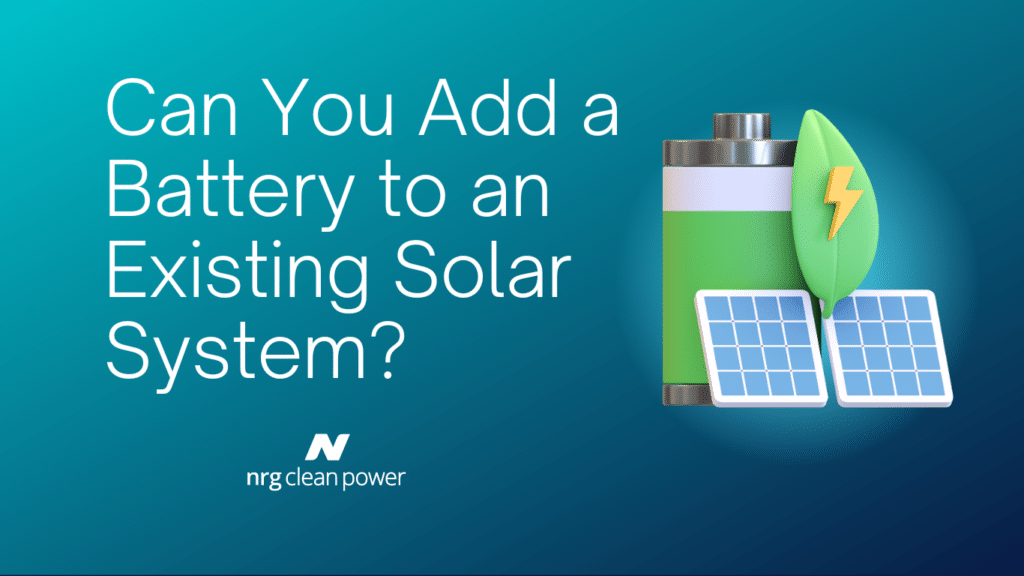
Adding a battery to an existing solar system is an excellent way to maximize the benefits of solar energy. It allows you to store excess energy produced during the day for use at night or during power outages. Here’s a comprehensive guide on how to add a battery to your existing solar system, the benefits, and what you need to consider.
Benefits of Adding a Battery to Your Solar System
1. Energy Independence
With a battery, you can store the surplus energy your solar panels produce during the day and use it when your panels aren’t generating power, such as at night or during a blackout. This reduces your reliance on the grid and provides a reliable backup power source.
2. Cost Savings
Using stored energy during peak hours when electricity rates are higher can significantly reduce your electricity bill. In many regions, utility companies charge higher rates during peak demand times, and having a battery allows you to avoid these costs.
3. Enhanced Sustainability
By storing and using your solar energy, you reduce your dependence on fossil fuels and decrease your carbon footprint. Batteries enable you to make the most of your renewable energy system.
Steps to Add a Battery to Your Existing Solar System
1. Assess Your Current System
Before adding a battery, evaluate your existing solar system. Check the capacity of your solar panels, the current inverter, and your typical energy usage. This information will help determine the size and type of battery needed.
2. Choose the Right Battery
There are different types of batteries available, each with its own advantages:
- Lithium-Ion Batteries: These are the most common and efficient batteries for solar systems. They have a high energy density, long lifespan, and require minimal maintenance.
- Lead-Acid Batteries: These are less expensive but have a shorter lifespan and lower efficiency compared to lithium-ion batteries.
- Flow Batteries: These are ideal for large-scale storage but are less common for residential use due to their size and complexity.
3. Check Compatibility
Ensure that the battery you choose is compatible with your existing solar system. Some older inverters may not support battery storage, and you might need to upgrade or add a hybrid inverter that can handle both solar and battery inputs.
4. Professional Installation
Hire a professional installer to connect the battery to your solar system. The installer will integrate the battery with your existing setup, ensuring that it operates efficiently and safely. They will also configure the system to optimize energy storage and usage.
5. Monitor and Maintain
Once the battery is installed, use a monitoring system to track its performance. Regular maintenance checks will ensure the battery remains in good condition and operates at peak efficiency.
FAQs
Q: How much does it cost to add a battery to an existing solar system? A: The cost varies depending on the battery type and capacity. On average, adding a lithium-ion battery can range from $7,000 to $14,000, including installation. Incentives and rebates may be available to offset some of these costs.
Q: Can any solar system be retrofitted with a battery? A: Most modern solar systems can be retrofitted with a battery, but it’s essential to check compatibility with your inverter and overall system setup. Older systems may require additional upgrades.
Q: How long does a solar battery last? A: The lifespan of a solar battery depends on the type and usage. Lithium-ion batteries typically last 10-15 years, while lead-acid batteries may last 5-10 years. Regular maintenance can extend the lifespan of your battery.
Q: Will adding a battery increase my home’s value? A: Yes, homes with solar panels and battery storage are often more attractive to buyers and can sell for a premium. The added energy independence and cost savings are significant selling points.
Conclusion
Adding a battery to your existing solar system is a smart investment that enhances energy independence, provides cost savings, and promotes sustainability. By following the steps outlined and consulting with professionals, you can seamlessly integrate a battery into your solar setup and enjoy the benefits of stored solar energy.
For more detailed information and guidance, explore our Learning Center and check out these articles:
